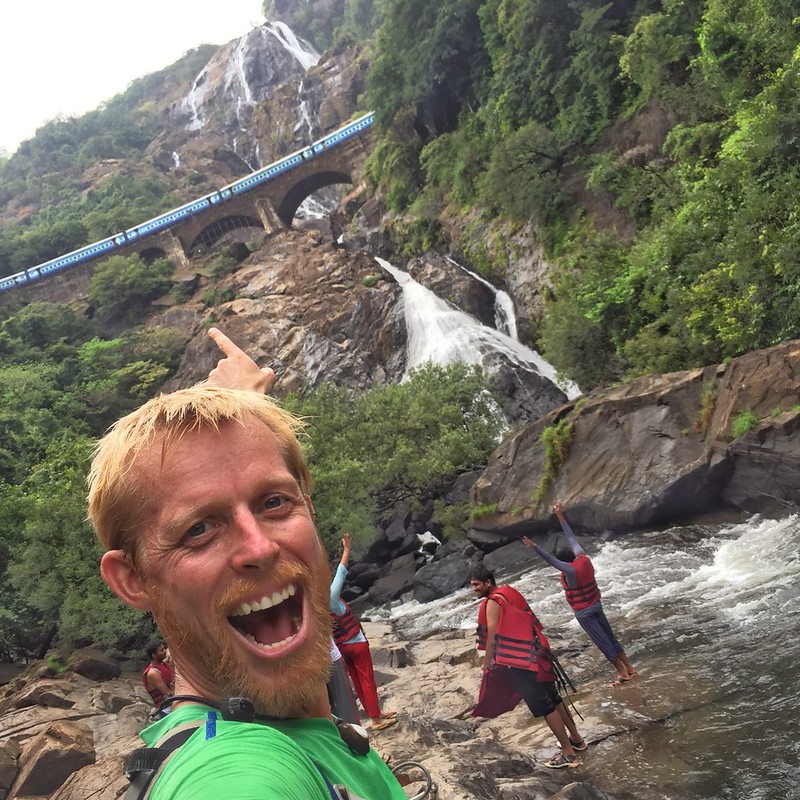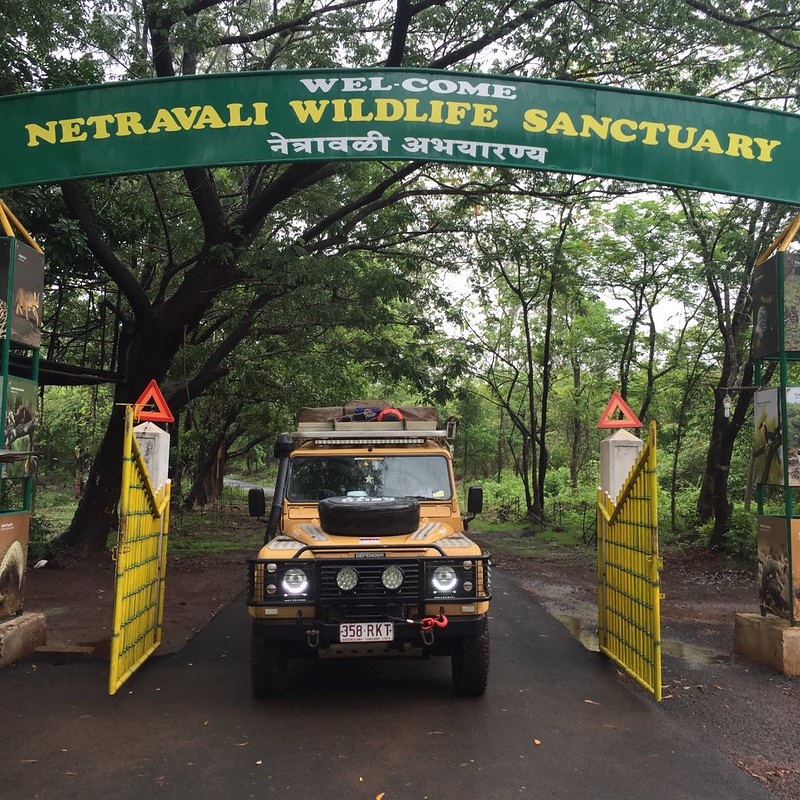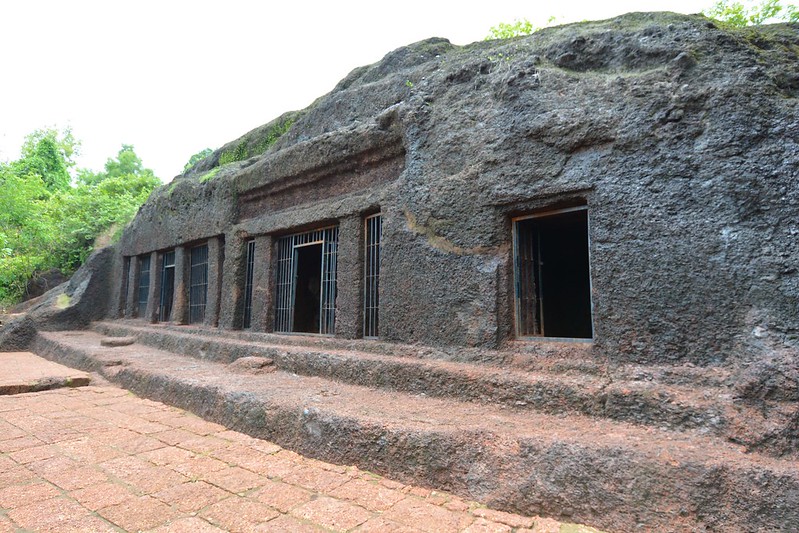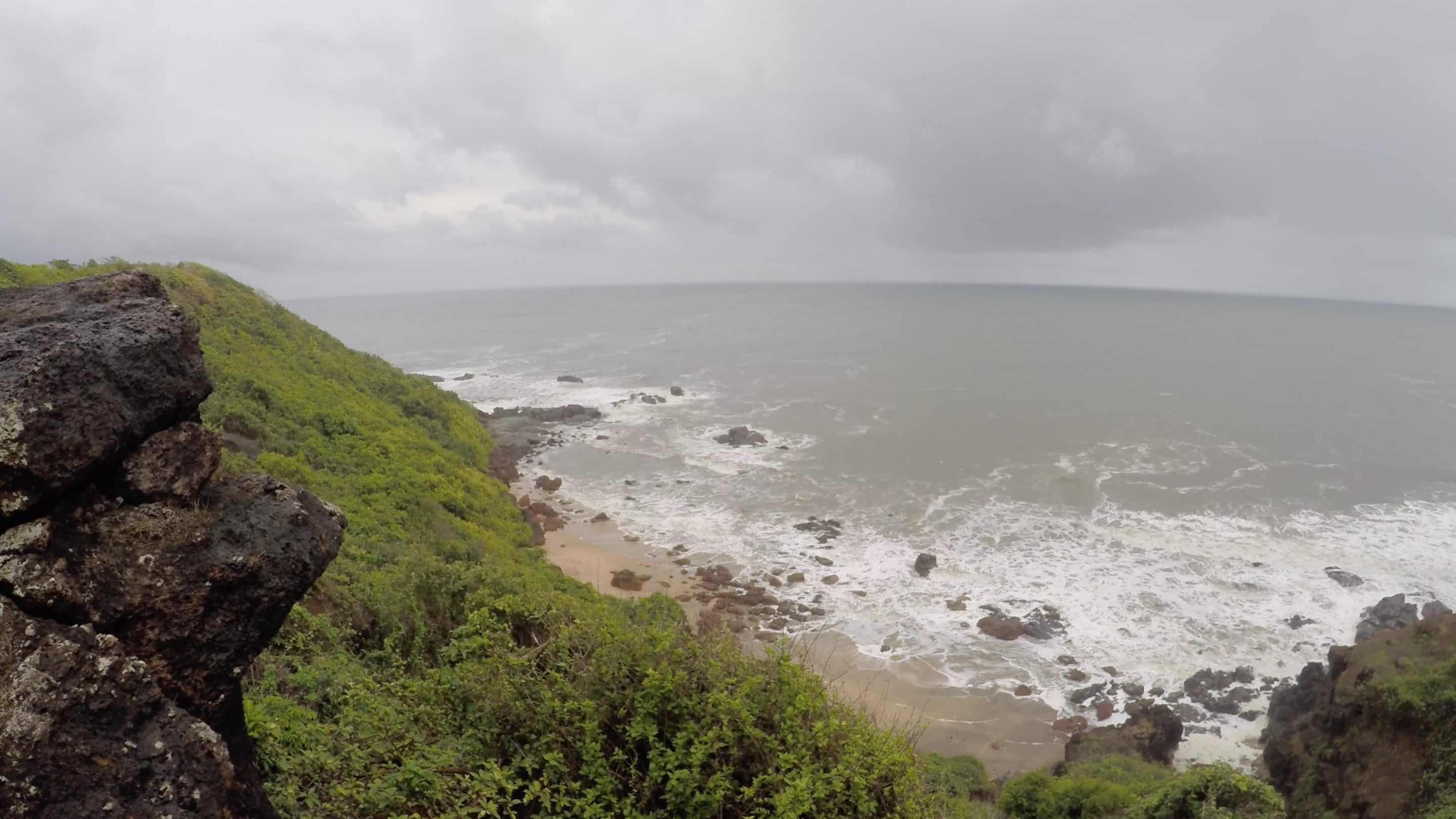While Sophee spent a week relaxing at a health retreat I decided to go on a mission in the to find the best ways to explore Goa during the monsoon.
With the rain clouds emptying their humid contents along the Goan coastline I headed inland to an area known as the Western Ghats, the line of mountains running parallel to the rain-soaked beaches along the Indian coastline. Swathed in tropical forest they’re one of the world’s 10 bio-diversity hotspots and are home to thousands of species of plants, animals and insects.
They’re a great starting point for a number of outdoor adventures and offer a different landscape from the beaches that Goa’s famous for.
GET SOAKED IN THE WATERFALLS
When the heavens open the rivers fill to capacity and the waterfalls flow in spectacular fashion. Take a private vehicle or taxi ride to the state’s interior and you’ll find a quieter side of Goan life that’s rarely seen.
Dhursagar Waterfall – the 76km drive from the capital, Panjim, to the best known waterfall in the state passes bustling villages, abundant paddy fields and lush forests before coming to an abrupt end at the town of Colem. From here you jump into one of the fleet of 4WD’s that whisk and wobble you along 8km of bumpy track to the falls. Each vehicle costs around 2000 rupee whether you go it alone or squeeze in with up to eight friends.
Top place for photos! The railway bridge cuts directly across the falls and several times a day the train crosses. When you hear the train horn you have a couple of minutes before it arrives so make sure you’re ready to click away.
Harvalem Waterfall – on the outskirts of Sanquelim, a small town only 33km from Panjim, the Cudnam River cascades 20 metres into a sizeable lake below. Best seen once the monsoon has been around for a few weeks, it’s a great place to go for a swim. It’s only a short drive from Harvalem Cave (below).
TAKE IN THE HISTORICAL BUILDINGS
Goa’s liberation from the Portuguese, late in India’s history left some stunning architecture in the capital, along the coast and high in the hills. There are also a huge variety of churches, mosques and temples dating back to the 5th Century.
Old Goa – home to some epic architecture in near-perfect condition, Old Goa is home to Se Cathedral, the Basilica of Bom Jesus, and the Church of St. Francis of Assisi. It’s worth spending a few hours here and heading inside each of them, the interiors are hugely different and wonderfully photographic. Note: if you want to take a tripod then expect to pay a small fee at the entrance
Villa Braganza – on the back of a friend’s recommendation and with only a few hours left before we had to drive north, I parked outside an old run-down mansion complete with peeling paint and rusty gate. With camera in hand I approached and an elderly woman got up from her balcony seat and came to meet me.
With open arms she welcomed me inside the aged building, through her front door and into an Aladdin’s Cave of antiquities. Floor tiles from Italy, chandeliers from Belgium, silver from England and furniture from Portugal. The home has been in the Menezes family for more than 350 years and is well worth the free entrance fee to explore. Donations however, are happily accepted!
Tiracol Fort – on the northern border of Goa, a short ferry ride across the Tiracol river, lies one of the most beautiful Portuguese forts I’ve visited. Currently undergoing a complete refurbishment it has sweeping views south along the Goan coastline. There aren’t many better places for lunch than on the terrace!
Explore the national parks
If it’s green, lush places that make you happy then visiting Goa in the monsoon is bound to make you beam from ear to ear. Home to six wildlife sanctuaries they explode with colour and life as soon as the rains arrive. They’re all pretty accessible and have well maintained tracks that make exploring them in a 4WD an adventure in itself. You can also jump onboard an organised tour in one of the official park jeeps or explore them on foot.
Netravali Wildlife Sanctuary, Sanguem – home to black panthers, king cobras and the spectacular Savari Waterfall
Bhagwan Mahaveer Wildlife Sanctuary – don’t walk in this one alone as tigers, leopards, panthers and wild boar roam free!
CHECK OUT THE ANCIENT ATTRACTIONS
Harvalem caves – three minutes drive from the waterfall of the same name (you’ll drive past them to get there) are the wondrous Harvalem Caves that date back to the 7th century.
Netravali bubble lake – this one blows my mind and there’s no real explanation as to why the phenomena happens at all. In front of the local temple is a sunken tank carved from the local Laterite rock that’s full of water and is about the size of a small swimming pool.
If you stand at the side and clap your hands or shout loudly, mysterious bubbles start to stream up from the bottom. Legend has it that the tank is sacred and it’s some sort of miracle from the local deity. Scientists however explain it’s just a build-up of gas…or the earth farting.
DO IT…WALK THE BEACHES IN THE RAIN!
To me there’s something beautiful about walking on a beach in the pouring rain. The raindrops hitting the surface ocean blanket out all others sounds around you, the water turns glassy smooth and the surf’s lines become more distinct as they approach the shore.
The term ‘monsoon’ actually refers to the wind system that hits the Indian coast at the beginning of June each year. Once it starts it continues for weeks and calm days are few and far between. Big winds mean big swells and sitting on a headland watching the huge waves barrel onto the rocks gives you a insight into the power of nature that’s helped shape the Goa coastline for the last millennia.
Forgot about staying dry and grab a raincoat or umbrella, walk with the stray dogs, say hi to a local and go for a wander along a sandy beach. 15 of India’s Top 20 beaches are in Goa and with government initiatives in place to remove any rubbish within 12 hours; they’re clean and beautifully photographic.
If you’re thinking of a holiday in Goa between June and September, don’t let the monsoon put you off. There are loads of new initiatives being introduced all the time including white-water rafting, amphibious vehicles and nature treks along and through the rivers!





